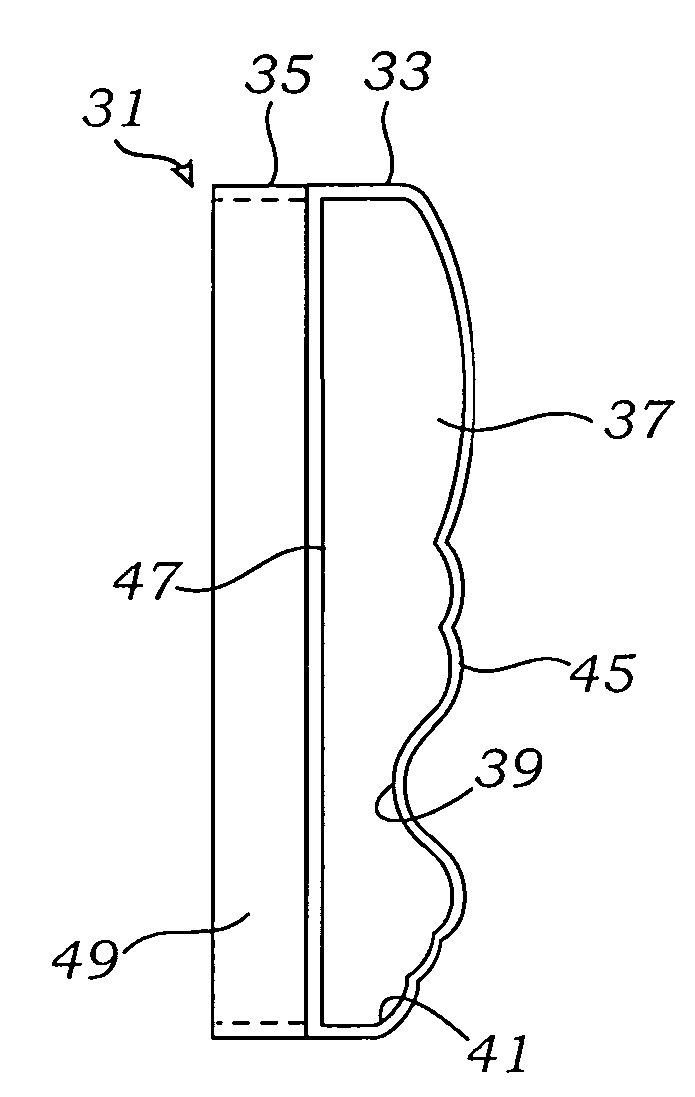Valence junction fitting
a technology of valve junction and fitting, which is applied in the direction of resiliently-mounted floors, door/window protective devices, walls, etc., can solve the problems of high scrap rate, inability to expect the home installer to have tools, and high cost and labor rate, so as to achieve a more stable or substantial relationship and less deflection of the first member
- Summary
- Abstract
- Description
- Claims
- Application Information
AI Technical Summary
Benefits of technology
Problems solved by technology
Method used
Image
Examples
Embodiment Construction
[0018]The description and operation of the valence junction fitting of the invention will be best begun with reference to FIG. 1 which illustrates a typical, fairly complex surface detail of an extruded valence 21 which can be used for other purposes. The valence 21 is typically a molding made of wood and having an extruded-type design. By “extruded type” it is meant that it may have a constant cross sectional area and profile. The short section is seen in perspective and is seen to have a flat rear side 23, and a front complex surface 25. The front complex surface 25 includes an undulating up and down pattern across one side of a width of the valence 21.
[0019]The valence 21 is typically made of wood and may be formed by moving a plank through a shaped planer which selectively removes the wood to yield the shape seen in FIG. 1. Valence 21 could also be made of plastic or other material. It is also understood that the constant cross sectional area shown need not extend over the entir...
PUM
 Login to View More
Login to View More Abstract
Description
Claims
Application Information
 Login to View More
Login to View More - R&D
- Intellectual Property
- Life Sciences
- Materials
- Tech Scout
- Unparalleled Data Quality
- Higher Quality Content
- 60% Fewer Hallucinations
Browse by: Latest US Patents, China's latest patents, Technical Efficacy Thesaurus, Application Domain, Technology Topic, Popular Technical Reports.
© 2025 PatSnap. All rights reserved.Legal|Privacy policy|Modern Slavery Act Transparency Statement|Sitemap|About US| Contact US: help@patsnap.com


